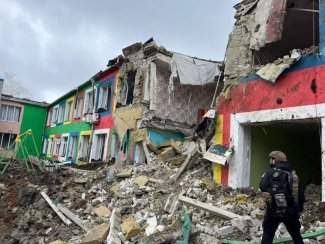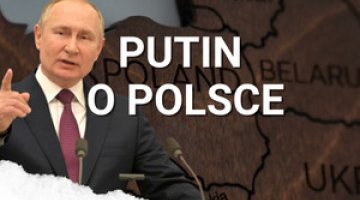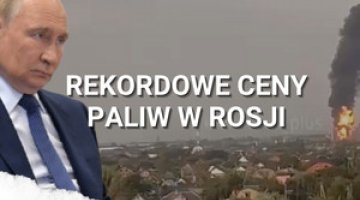Fighting around Bakhmut and Avdiivka stabilises. Day 403 of the war

Ukrainian forces have improved their tactical situation as a result of their counterattack on the western side of the Donetsk-Donbas canal in the Ozarianivka area, and the seizure of some areas in the strip of no-man’s-land in the Zaporizhzhia oblast southwest of Orikhiv and in Kharkiv oblast northeast of Kupiansk. They have also consistently stopped enemy attacks in the Donbas. The average number of these has now stabilised at around 70 per day, most of which are being launched from the areas around Bakhmut and Avdiivka. In Bakhmut, the invaders have made small advances towards the town centre. The local Ukrainian command has indirectly acknowledged that it has lost the AZOM metallurgical plant north of the centre.
The Ukrainian General Staff says that the number of targets and the intensity of the enemy attacks have fallen. In addition to the areas mentioned above, clashes have occurred in the Lyman-Kreminna-Siversk triangle, and in the arc west of Donetsk. According to reports from the local Ukrainian command, the Russians have broken out northwest of Donetsk toward the Vovcha river, but were held back near the village of Karlivka above it. The main Ukrainian defence line is still running through Pervomaiske, which lies to the southeast of that village. The Ukrainian side has emphasised that the invaders are building a potential strike grouping northeast of Avdiivka (in the area of the village of Verkhniotoretske). In turn, the Ukrainian administration of Mariupol has highlighted the ongoing expansion of the enemy fortifications around the city and in the occupied part of Zaporizhzhia oblast.
On 31 March, a massive missile attack (Iskander-M, S-300 and 300-mm rockets from Smerch launchers) hit the city of Zaporizhzhia along with its suburbs, damaging 82 buildings. However, the main target of the attacks remains the Ukrainian hinterland in the part of Donetsk oblast controlled by the defenders. For this reason, on 2 April, the Ukrainian authorities decided to forcibly evacuate children from Slovyansk. Russian artillery and aviation are still shelling and bombing along the contact lines and in border areas. Outside the combat areas, their main target is still the right-bank part of Kherson oblast, including Kherson city itself, although according to Ukrainian data the intensity of shelling has varied widely in recent days (from 131 to 439 shells per day). The Ukrainians shelled Melitopol on 2 April.
On 1 April General Serhiy Sobko, the deputy commander of the Territorial Defence (TD) forces, who is also the TD’s chief of staff, announced the launch of the ‘Training of Captains’ course to address the shortage of qualified platoon and company commanders in the TD. It will be conducted by officers trained abroad according to NATO standards, and will take the trainees’ current war experience into account. Interior minister Ihor Klymenko stated that recruitment for the assault brigades being formed under the aegis of his ministry (the so-called ‘offensive guard’) has now ended. Tens of thousands of volunteers have signed up for the service; some of them have already been conscripted, and some will be used as personal reserves.
On the same day, Poland’s PM Mateusz Morawiecki announced that Ukraine will purchase 100 Polish Rosomak wheeled armoured personnel carriers, which the EU and US will finance. On 3 April, Marcin Przydacz, minister at the Chancellery of the President of the Republic of Poland, confirmed that Poland had transferred “several” MiG-29 fighter jets to Kyiv. According to Reuters, the United States is expected to announce another military support package for Ukraine on 3 April; this should include airspace surveillance radar units, various kinds of ammunition, anti-tank, air-to-air and anti-aircraft missiles for NASAMS systems, assault bridges and technical security vehicles. The total package will be worth $2.6 billion in total. Norway and Denmark are planning a joint transfer of 8000 rounds of 155-mm ammunition, which should arrive in Ukraine along with Danish CAESAR cannon howitzers.
Also on 1 April, the German defence minister Boris Pistorius confirmed that the NATO countries intend to transfer two battalions of Leopard 2 tanks and four battalions of Leopard 1 tanks, 160 in total (60 Leopard 2s and 100 Leopard 1s), to the Ukrainian army. The Leopard 1s are expected to arrive by the end of the year. However, Pistorius did not address the fact that the 100 Leopard 1s will not be enough to fully equip four battalions (a minimum of 31 tanks is needed for each one). Instead, he stressed that the allies’ reserves have already been exhausted, and he “does not see a scenario wherein it will be possible to send more Leopards to Ukraine beyond those already announced”. Rheinmetall is planning to set up a service centre in Romania for the weapons Germany has handed over to Kyiv: PzH 2000 self-propelled howitzers, Leopard 2 tanks, Marder infantry fighting vehicles, Fuchs wheeled transporters and trucks. This centre will also service the Challenger 2 tanks sent by the UK.
In the occupied territories of Kherson and Zaporizhzhia oblasts, a widespread campaign to grant Russian citizenship to the local people is being carried out. These actions are connected to the fake elections to the local government which have been called for the autumn. The structures of the main Russian parties have already been registered in Henichesk and Melitopol, which are the centres of the occupying local authorities. The process of ‘passportisation’, while formally voluntary, is aimed at putting economic pressure on the impoverished population, which has been cut off from the Ukrainian banking system. It is primarily targeted at employees of ‘state institutions,’ pensioners and farmers (under Russian law, only Russian citizens can own land). According to unofficial estimates, about 200,000 people alone live in the part of Kherson oblast which is under Russian occupation (compared to c. 550,000 before the war); about 35% of these people have already received Russian passports. There is also increasing pressure on parents to direct their children to Russian schools, and not to use online teaching from Ukrainian educational institutions.
The Razumkov Centre has published the results of a poll on Ukrainian attitudes toward the ongoing war. As much as 93% of the public still believes in victory over Russia, an assessment shared by residents of all regions of the country: according to the survey, the differences between the western and central, southern and eastern parts of the country are small. Of those who believe in victory, half believe it will happen before the end of 2023, 26% expect the war to end within one to two years, and 7% expect it to end within three to five years; 47% of Ukrainians would consider a return to the January 2014 borders as victory, while for 31% that would mean smashing the enemy army and triggering the breakup of the Russian Federation. Only 10% of those questioned are willing to accept peace in terms of acknowledging the borders of 23 February 2022, or of surrendering some of the territories Russia seized after the outbreak of war.
Commentary
- In recent weeks, Russian forces have slowed the pace of operations in all directions, reducing the number of targets they attack. Although they are still making more attempts to attack per day than was the case back in January and February, a large part of these are just tests of the defenders’ positions rather than serious efforts to break through them. Having achieved the operational encirclement of Bakhmut and Avdiivka (all possible supply routes to both towns are now within range of Russian artillery), the invaders have been consistently unable to physically cut off the defending troops there. The Russian assault on Bakhmut, led by Wagner Group mercenaries supplied by the Russian army and supported by artillery and aviation, is continuing uninterrupted. It remains unclear to what extent the current slowdown in operations is due to the exhaustion of Russian forces and losses incurred in the fighting, and to what extent it is a consequence of achieving the tactical objectives they set in January and February, and preparing their troops for the next phase of the operation.
- Minister Pistorius’ reiteration of his announcement that no more German tanks will be transferred to Ukraine – especially in a situation where all the states donating Leopards are dependent on Germany to supply spare parts – means that these tanks cannot enhance the Ukrainian army’s offensive capabilities in the long term. Another problem is the technical diversity of the Leopard 2s which have been donated (only the ‘Polish’ battalion will have uniform equipment). Also, four of the six declared battalions will have incomplete stocks by design (Pistorius’ declaration shows that each of them will have just 25 Leopard 1s), and will be equipped with older tanks that do not meet the requirements of the modern battlefield. The Russians are resorting to the use of T-62s (which are similar to the Leopards) as infantry support fire points (they have proven themselves in this function in previous conflicts), although they do not participate in regular armoured operations.





